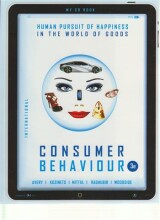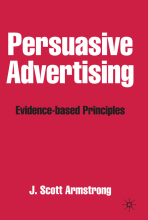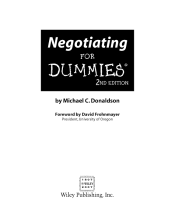Decision models: compensatory and noncompensatory - Consumer personality
13 important questions on Decision models: compensatory and noncompensatory - Consumer personality
How is our personality created?
A part of our personality is genetically given to us, and a part is formed by our social environment. Nevertheless, our personalities are very much influenced by our values.
What are the forces of our psychological make-up?
Genetics, values and motives.
Motives can be biogenic, or psychogenic.
Values are learned from society, we select these values based on our own personal motives.
Why do humans develop personality?
Because it is efficient to build a standard repertoire of responses to one's environment as opposed to thinking up a new response every time a situation arises.
These standard responses, by repeated occurrence, get etched in memory and are involuntarily elicited whenever the situation calls for it. For example aggressive consumers get angry when an advertised item is out of stock.
- Higher grades + faster learning
- Never study anything twice
- 100% sure, 100% understanding
There are two dominant theories for explaining the concept of personality
- Freudian theory of personality
- Personality trait theory
Name the three divisions of the human psyche according to Freud.
Id, superego, Ego. The personality is crafted by the interplay of these three forces.
What are defense mechanisms?
Psychological processes we employ to protect our egos. It makes a behavior acceptable to our own sense of right and help us overcome guilt and frustration.
Many of the id's urges are socially unacceptable, they are suppressed. Then they are expressed in alternative ways that are more acceptable to society. Behaviors that express themselves in this manner are called defense mechanisms.
What is an example of defense mechanisms?
Rationalization: when someone tries to give a rational reason for a seemingly irrational behavior.
Projection, Aggression, Repression, Withdrawal, Regression.
What is the difference between Freud's theory and 'trait theory'?
Freud's theory wants to explain personality. Trait theory wants to describe personality.
Freud deals with the psychological forces. Trait theory deals with the characteristic behavior.
Freud focuses on the 'why' of personality. Trait theory focuses on the 'what' of personality.
What is a personality trait (Trait theory of personality)
A person's stable and consistent way of responding to the environment in a specific domain.
What is the difference between personality and a personality trait (Trait theory)
A personality trait works in a specific domain, whereas personality is the sum total of all of the personality traits.
Give a marketing implication for each of the OCEAN personality traits (Big Five)
- Openness: makes you adopt products more readily
- Conscientiousness: use shopping lists, evaluate product choices more thoroughly and not take advantage of retail errors.
- Extraversion: makes you engage in more social leisure activities.
- Agreeableness: act like a nice consumer in service establishment
- Neuroticism: engage in escape or compensatory consumption behaviors, such as binge eating or gambling.
What are the marketer's five personality traits of use to marketers?
- Innovativeness: predisposed to embrace new products, ideas and behaviors.
- Variety/novelty seeker: desiring new and diverse experiencees
- Hedonism: seeking maximal pleasure out of life
- Vanity: excessive pride in one's appearance and accomplishments (can take two forms: anxiety and a positive (generally inflated) view.
- Uniqueness seeker: desire to differentiate one self from the pack, e.g. due to visible consumption.
How do marketers use the concept of personality in brand communications?
They present their brand with some desired symbolic meanings
1) Give brand personality by showing certain symbolic images in conjunction with the brand;
2) Choose spokespersons and human models whose known professions, skills, styles and moods depict the desired personality;
3) They depict the brand in use by typical 'target' users whose style, mood and the 'activity of the moment' capture and convey the intended personality image.
The question on the page originate from the summary of the following study material:
- A unique study and practice tool
- Never study anything twice again
- Get the grades you hope for
- 100% sure, 100% understanding































